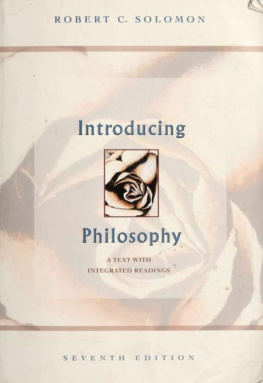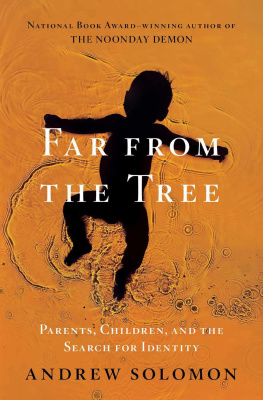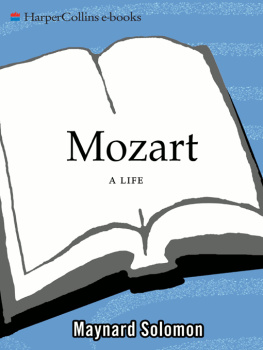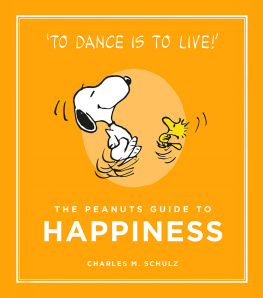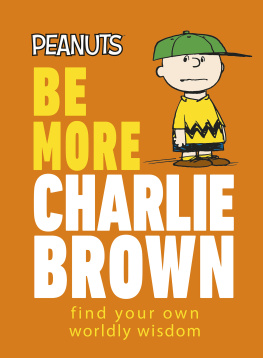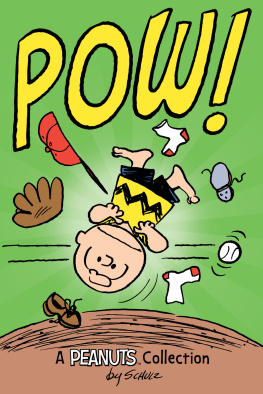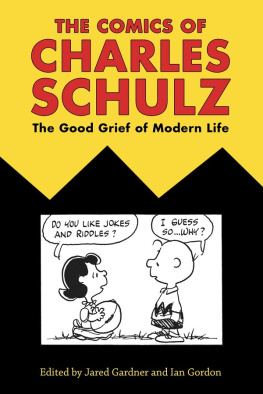The Art and Making of Peanuts Animation

Snoopy Come Home, 1972
Artist unknown
Red and blue pencil


The Art and
Making of
Peanuts
Animation
Charles Solomon Foreword by Lee Mendelson |


To the memories of Bill Littlejohn, Bill Melendez, and Charles Schulzthree artists whose work I continue to enjoy and whose company I miss.
CHARLES SOLOMON
Copyright 2012 by Peanuts Worldwide, LLC. All rights reserved. Permission to duplicate materials from Peanuts comic strips must be obtained from Peanuts Worldwide, LLC. Permission to quote or reproduce for reviews or notices must be obtained from the respective copyright holders. Find Peanuts online at www.peanuts.com .
All rights reserved. No part of this book may be reproduced in any form without written permission from the publisher.
Library of Congress Cataloging-in-Publication Data available.
ISBN 978-1-4521-2620-3
Designed by MacFadden & Thorpe
Chronicle Books LLC
680 Second Street
San Francisco, California 94107
www.chroniclebooks.com
Title page:
Publicity still, 1965

A Boy Named Charlie Brown Movie, 1969
Artist unknown
Ink, newsprint
CONTENTS

It Was a Short Summer, Charlie Brown, 1969
Production cel
Foreword
When I started producing a documentary about Charles Sparky Schulz in the fall of 1963, I asked him if we could possibly include a few minutes of animation. He had already been approached by Hollywood producers about making animation out of his Peanuts, but had been leery of taking the plunge into television. He said: You know the great thing about being a cartoonist is that you have 100 percent control of the comic stripyou are the writer, producer, director, and stage manager all at once. So its scary to turn your characters over to other people in a completely different medium. We talked about it some more and then he said: Well, if were going to do this, there is only one person I would trust. His name is Bill Melendez. We worked together a few years ago on a few minutes of animation. You should meet him.
And that was the start of our three-way partnership that would extend for thirty-eight years and produce fifty network specials and four feature films. Sparkys leap of faith was rewarded by one of the greatest animation teams in entertainment historythe producers and directors and inkers and painters and editors of Bill Melendez Productions.
I am thrilled with Charles Solomons brilliantly researched, first-ever in-depth look behind the scenes of Peanuts animation. As will any reader, I am learning for the first time all sorts of details about the individual contributions of the Melendez team. I also appreciate the heart-warming comments from so many famous animators (of my favorite movies) throughout the industry. I never realized the impact our shows have had on creators whom I admire so much.
It never ceases to amaze me how Sparkys characters have permeated all facets of American society. On a daily basis, references to Charlie Brown, Snoopy, Linus, Lucy, and the rest of the characters appear in everything from books of fiction, feature films, TV sitcoms, sports commentary, late-night television, and even the way we speak.
One example of those last two items: On the fortieth anniversary of A Charlie Brown Christmas, CNN did an extensive interview with me. But that night on his show, Jimmy Kimmel edited the interview so that, after each CNN question, instead of seeing and hearing me, we see an elderly lady answering each question by saying, Wah-wah-wah. The audience started laughing after the first wah-wah because three generations have grown up knowing how the teachers voice is humorously masked in the TV specials.
And of course, the Peanuts charactersand the music of Vince Guaraldihave now become part of the American holiday fabric. The dance scene in A Charlie Brown Christmas underscores the brilliant way that the Melendez team could take Peanuts off the comic page and bring it to life on the television screen. And Bill Littlejohns animation of Snoopy flying his doghouse and Snoopy and Lucy arm wrestling have to be among the classics of animation.
It was an honor for me to work with Bill and his other directorsSam Jaimes, Phil Roman, and Larry Leichliterand its very gratifying that they are finally getting the credit they deserve, though they did reject the one idea I had for animation in thirty-eight years. There was a scene in Its Magic, Charlie Brown where Snoopy makes Charlie Brown disappear. There is nothing on the television screen, just offstage voices. I suggested that if we did a whole bunch of scenes like that, not only would it be funny but also it would save a lot of animation costs. Bill said: Do you want me to tell Sparky about your suggestion? So that ended that right there.
Thanks to Charles Solomon, a life-long devotee of animation, and to Chronicle Books for making this tribute happen. I am certain that Bill Melendez, Bill Littlejohn, and Sparky Schulz are smiling from above.
Lee Mendelson
April 2012
Introduction: From the Strip to the Screen

A Charlie Brown Valentine, 2002
Dean Spille
Watercolor and Graphite
The Peanuts television specials were up there with The Wizard of Oz and Rudolph the Red-Nosed Reindeer: The whole world would stop, and you knew that everywhere every kid was in his living room watching the same thing. You would repeat the lines and discuss them the next day in school.
Andrew Stanton, director, Wall-E
On December 9, 1965, a round-headed little boy walked across the screens of more than fifteen million televisions in America, complaining, Christmas is coming, but Im not happy. I dont feel the way Im supposed to feel. I just dont understand Christmas, I guess.
Charlie Brown had initially been animated in a series of Ford Falcon commercials, which debuted in January 1960, and in the titles for The Tennessee Ernie Ford Show shortly thereafter. But A Charlie Brown Christmas (1965) was, in the words of Time magazines critic a special that really is special. For the millions of baby boomers who watched that initial broadcast, it became an instant classic.
Next page

